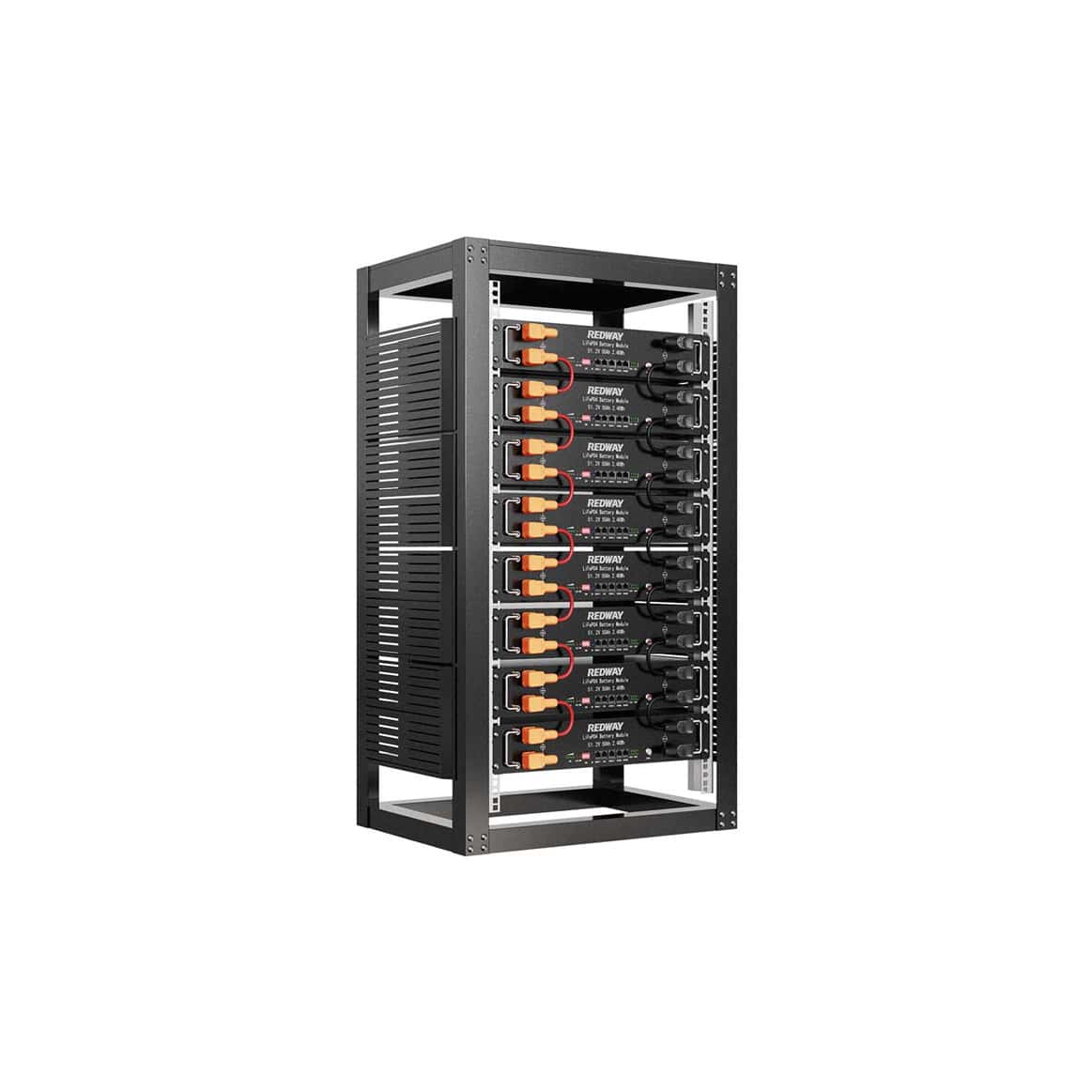At Redway Battery, we take pride in presenting the PR-LV5150-2U-PRO Rack Battery System, a cutting-edge UPS solution engineered to deliver unparalleled power protection for mission-critical operations in data centers, server rooms, and high-density computing environments.
Advanced Features and Design
The PR-LV5150-2U-PRO is distinguished by its advanced features, including:
- Pure Sine Wave Output: Ensures clean, reliable power for sensitive equipment.
- Microprocessor Control Unit: Provides precise monitoring and control capabilities.
- High Efficiency: Optimizes energy usage, reducing operational costs.
- Rack-Mountable Design: Space-efficient solution suitable for diverse infrastructures.
- Redundancy Options: Ensures continuous operation even during component failures.
Applications and Reliability
This robust system has established itself across various industries:
- Healthcare: Safeguards medical equipment from power disruptions.
- Finance: Ensures uninterrupted operations in financial institutions.
- Education: Protects critical systems in educational institutions.
- Manufacturing: Provides stable power for seamless production processes.
- Telecommunications: Essential for maintaining communication networks.
Security and Integrity
Security is paramount in the PR-LV5150-2U-PRO:
- Secure Communication: Protects data during transmission.
- Firewall Protection: Safeguards against unauthorized access.
- Firmware Updates: Ensures system remains resilient against evolving threats.
- Auditing Capabilities: Provides transparency and accountability.
Maintenance and Performance
To maintain peak performance:
- Customized Maintenance Plans: Tailored by Redway Battery to meet specific operational needs.
- Testing Protocols: Ensures reliability and longevity of battery performance.
- Backup Time: Up to 8 hours, enabling swift response to power interruptions.
Conclusion
The PR-LV5150-2U-PRO Rack Battery System stands out as the preferred choice for businesses requiring robust power protection:
- Advanced Features: Enhance operational efficiency and reliability.
- Security Measures: Mitigate cyber risks and ensure system integrity.
- Tailored Support: From Redway Battery ensures optimal performance and longevity.





